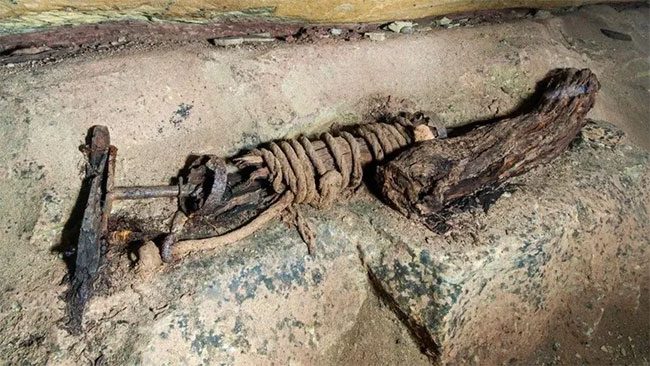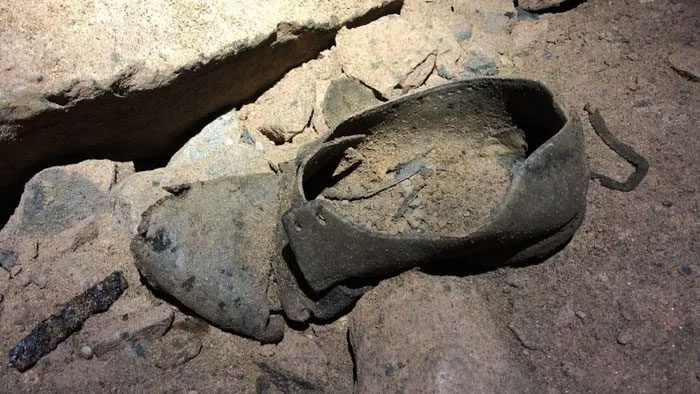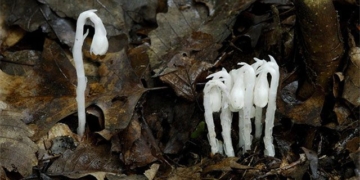Leather shoes, clay tubes, and a mysterious inscription written in candle soot are among the artifacts recently discovered by a British exploration team in a cobalt mine that existed centuries ago in Cheshire, England.

The windlass, a tool used for transporting heavy materials, was found in a cobalt mine abandoned for over 200 years.
The mine is located near Manchester in a village called Alderley Edge, which was once a source of cobalt, a material mined to create blue pigments used in ceramics and glass. Cobalt mining was a lucrative industry for England in the 19th century. However, importing cobalt from other countries became cheaper than mining it locally, leading to the abandonment of this particular mine, owned by Sir John Thomas Stanley in the early 1800s, around 1810.
Members of the Derbyshire Caving Club have been exploring the Alderley Edge mine since the 1970s and have granted access to the National Trust, a UK-based conservation charity. The exploration team recently stumbled upon several personal items left behind in a previously unexplored area of the mine.

A shoe found in the abandoned cobalt mine over 200 years old.
“Finding a mine in pristine condition, along with personal items and such inscriptions, is very rare,” said Ed Coghlan, a member of the Derbyshire Caving Club.
Additionally, the explorers found a bowl buried in the wall, which may indicate that superstitious miners were thanking the mine for good ore. A rare find was the discovery of the windlass, a tool used to lift and move heavy materials. Notably, the explorers also uncovered a mysterious inscription featuring the initials “WS” and the date August 20, 1810, below it.
“Our research so far has not identified who this is,” Coghlan stated. “Could it be an individual wanting to say, ‘I was here,’ or from a visit by a mine manager or property owner, or could it be the last date this mine was used?”
The Derbyshire Caving Club and National Trust have collaborated with Christian Surveying and Inspection Solutions, which used 3D technology to create models of the buildings and underground spaces so that future generations can explore the geological history of England’s mines.





















































